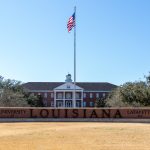Supporters of Arizona’s universal expansion of its Empowerment Scholarship Account (ESA) program call it the greatest advancement of school choice in recent history. Opponents insist it will do immense harm to the public education system.
But for me, it’s simple: as a parent, I believe this reform gives my wife and me greater control over our son’s education so that he can have a brighter future. If the goal of our education system is to provide the best education possible to every student, why is the public education system fighting against a program that allows parents like us to make decisions about what is best for our child?
Our Experience with the Local Public School District
Since his first days in pre-school, we made it a point to meet with our son’s teachers so we could support his learning. Our son attended Prescott Unified School District (PUSD) schools between first and seventh grades, and I volunteered regularly when he was in first and second grades, helping the children with their reading and writing. We view our relationship with his teachers and the school as a partnership working for his future.
The most consistent challenge over the years was the math program. PUSD uses a curriculum called EngageNY, which is similar to Common Core. But EngageNY does not work for our son. So instead of just helping him with math each night to cement the lessons from the day, I taught him math at home using the principles I had learned as a child. We also supplemented his math instruction with a traditional curriculum by Khan Academy online.
Along with many other parents, we repeatedly raised concerns about EngageNY over the years. Our concerns were ignored.
Our son is fanatical about science. He dreams of a future in the field. But at PUSD, he spent four years learning about the solar system and Newton’s Laws of Motion in science class. The same science content was repeated each year. As with math, we used online enrichment programs to keep his hungry mind satisfied. For a child interested in a career in a STEM field, PUSD’s science curriculum was a huge disappointment.
In English Language Arts, he never once brought home a familiar book and rarely had writing assignments. In fact, he rarely brought much of anything home. Once he reached the fifth grade, our son no longer brought home graded classwork or homework. At the instruction of his teachers, his work stayed at school in a binder. We had to push for special arrangements to be made to be able to see that binder once a week. We had little visibility over what our son was learning at school or how he was progressing academically. The online portal that PUSD promotes as a tool to provide visibility never included comments or feedback, and it was rarely up to date with grades.
Seven years in PUSD taught our son that he was not going to learn about the things that interest him in school. As he progressed through middle school, the confident, curious, energetic, gregarious, and extroverted child I dropped off at kindergarten began to shrink into an invisible and awkward pre-teen in the harsh social environment of a big public school. He was bored and frustrated. Our son was losing his enthusiasm for learning, and we were losing our son.
The pandemic made matters worse. When we learned of PUSD’s strategy to make up for learning loss, we were beset with frustration. It was clear that the district was going to focus its attention entirely on those who suffered the most while neglecting the needs of the rest. They have disputed this claim and will continue to do so, but in private conversations with parents whose children are still enrolled in PUSD, our suspicions have been confirmed. The district is helping those who are behind to catch up, as it should. But the district should also be teaching those who maintained grade-level standards through the pandemic.
We don’t blame teachers—by and large, we had strong working relationships with most of our son’s instructors. Instead, our experience was the result of curriculum selection and strategic decisions made by district leadership.
Our Experience with the ESA Program
We were lucky that our son qualified for ESA funding before it became available to all Arizonans. ESAs, often referred to as backpack funding, allow parents to use the money that would otherwise go toward a given child’s public education to pay for education expenses that best matches their student’s unique learning style. In our case, that meant removing our son from public school after the seventh grade and enrolling him in a private Catholic school. It was not an easy decision to make at the time, but in retrospect, we wish we had moved him years earlier.
The first major difference we noticed in the private school was the size of our son’s class: his entire eighth grade cohort consisted of thirteen students. That small number of students created a tight community, and there was no room to become invisible.
EngageNY math was replaced with Saxon math. Instead of teaching our son math each night, I simply looked over his work to reinforce what he had learned in school earlier in the day. His science teacher had the class dissecting animals and learning about forensics. The English language arts and history assignments were classical in nature, meaning my wife and I could pull from our own school experiences to talk with our son about the plots and themes of what he was studying. Graded classwork and homework came home weekly. As parents, we were able to reinforce what he was learning at school; we were no longer cut out of his education.
When we approached the teachers and the principal about specific concerns, we found a faculty that was receptive and responsive to our feedback. Over the course of our son’s eighth grade school year, we regained our trust in his education. Through it all, our son blossomed. His confidence has returned, as has his curiosity. He is once again engaged and challenged in the classroom.
This was made possible because of the ESA program. We were able to look beyond PUSD to find a school and a curriculum that would better serve our son. The Arizona Legislature has now provided the same opportunity to every family in Arizona. This is something to celebrate, not tear down.
Many families are happy with the public education system. That is fantastic. For them, no change is necessary. But there are other students, families, and teachers who are not satisfied with the status quo. These stakeholders should be able to turn to alternative education platforms.
Sadly, there is already a push underway to kill this reform before most families even have the chance to realize the promise of school choice. The wonderful experience our son enjoyed could be stopped by a political movement more concerned with maintaining the status quo than what is in our children’s best interests. School choice is academic freedom.
I don’t want to destroy the public education system; I simply want to save my son. Every parent should be able to do the same.
Brad Scott of Prescott is the parent of a high school freshman who has benefited from Arizona’s Empowerment Scholarship Account program.
Learn more about the facts of Arizona’s universal school choice expansion and how it will help families like Scotts here.









